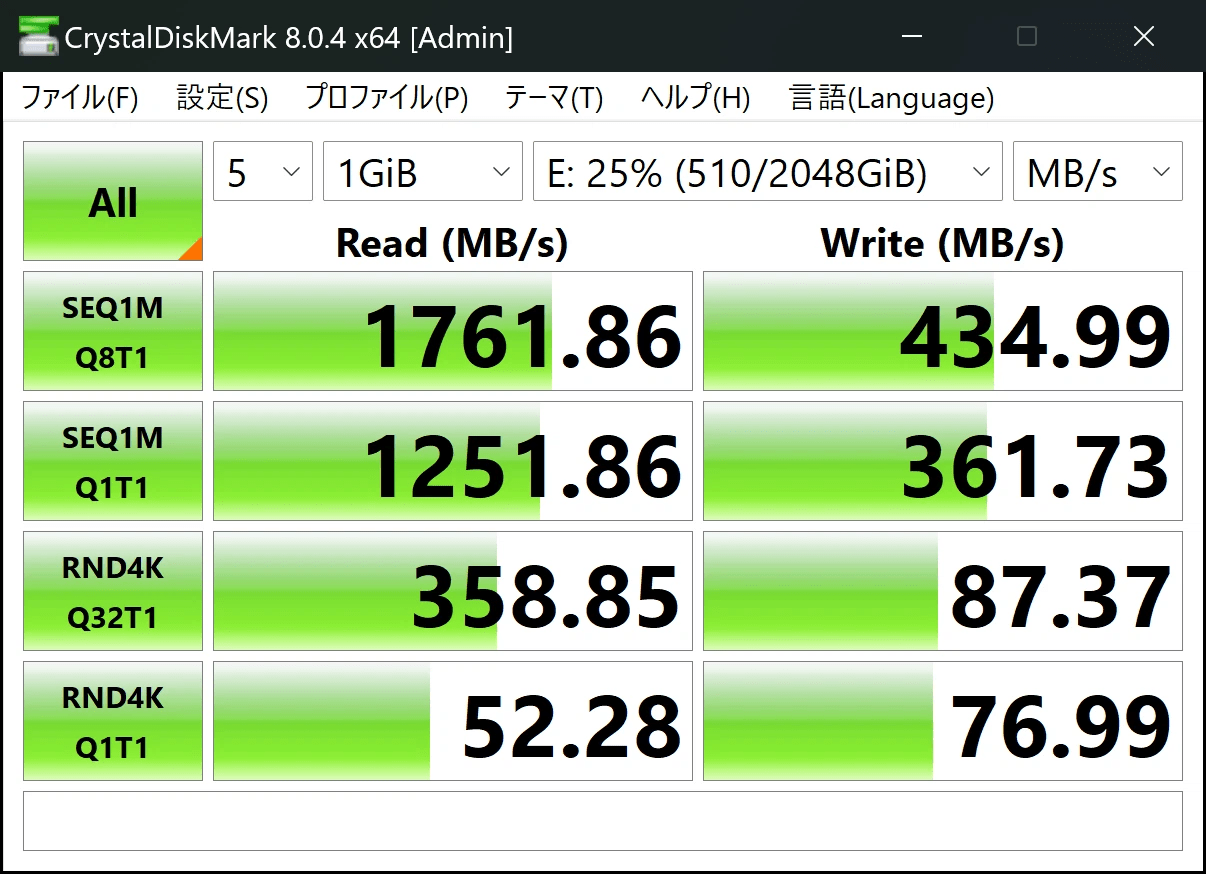
Windows 11 Setup Notes
There were a few features I wanted to try, and with the announcement that Windows 10 support would end in October 2025, I finally decided to upgrade my Desktop PC to Windows 11. I reviewed various settings during this process, so I'm making notes on potentially useful features, including some older ones.
My main uses are for GPU processing (AI-related, gaming). I have about 5 SSDs installed for storage.
Japanese Voice Input
In my case, for some reason, I could only input English voice on Windows 10 no matter what I did. With Windows 11, perhaps because I installed the Japanese version from the start, it works without any issues.
However, the usability is inferior compared to smartphones like the Pixel series or Macs with M1 and later. Perhaps because it's processed over the network, the input is confirmed each time, so you need to speak rapidly, the conversion accuracy is a bit off, and voice input is canceled if you type during it. But depending on the situation, it can be faster than typing, so it seems usable as a supplementary tool. I plan to write about this in detail in a separate article.
HDR Settings
It's now possible to adjust HDR. This is an important feature for gaming consoles. There was already a function to adjust the brightness of SDR applications when HDR was enabled. Now you can adjust the luminance and saturation of HDR and create profiles.
Dev Drive
As the name suggests, this is a feature for development. It creates a drive suitable for intermediate data that is read and written at high speed, using ReFS, the successor to NTFS (which can only be used standalone on Windows Server), as the backend. It's a performance-focused system that even weakens antivirus software settings by default.
It seems useful for programmers as a place to store npm or Cargo caches, and for video creators to store render caches. I realized that when the OS supports it at this level, it even extends to antivirus software.
Storage Spaces
This is a feature that allows you to combine multiple storage devices and treat them as a single area. It's what you might call software RAID. I understand it to be a more understandable and advanced processing function than the old dynamic disks (like span volumes).
It seems to have been around since Windows 8, but hasn't been much talked about. Thinking it might have become practical by now, I decided to try it out. The setup is simple: just throw unused disks into the pool and select "Resiliency". "Resiliency" is like choosing which RAID to use. For example, two-way mirror is equivalent to RAID1, and parity is equivalent to RAID5. This time, I set it up with a two-way mirror. The usable capacity is halved, but it's convenient because you don't have to be conscious of the capacity of each volume, it has fault tolerance, and if you run out of space, you can just procure more disks and add them.

Commemorative CrystalDiskMark
Improving Usability
From here on, these are setting notes I've made to improve usability.
Preventing Automatic Sleep Cancellation
Windows has always had this issue where a connected mouse swaying in the wind is enough to cancel sleep mode. The default setting for new devices allows them to cancel sleep, so it's not uncommon to find your computer suddenly on in the middle of the night. It's extremely stressful.
So, as per the superuser post below, I run this command in an Administrator-privileged command prompt. It gives an error, but the process is executed, allowing the computer to properly sleep at night. As this happens every time a new device is added, it's good to set it to run periodically.
powershell -Command "powercfg /devicequery wake_armed | ForEach{ powercfg /devicedisablewake $_ }"
Editing the Registry for Key Remapping
On the keyboard I use (Mac English), the command key next to the space bar becomes the Windows key. I usually use the command key, and a single press switches between Japanese and English, so I want to achieve this in Windows as well.
However, the Windows key is a very tricky thing, and ordinary key remappers can't change its behavior. Even the official tools don't handle it properly. So, I have no choice but to edit the registry to assign it to another key, and then customize it as I like from there. For reference, I'm posting my registry settings and doc. Note that it's little-endian.
reg add "HKEY_LOCAL_MACHINE\SYSTEM\CurrentControlSet\Control\Keyboard Layout" /v "Scancode Map" /t "REG_BINARY" /d "0000000000000000030000001DE05BE0FFE05CE000000000" /f
Installing Keyhac
Once the registry is edited and prepared, you can customize your input as you like with Keyhac. I use a single press of Cmd to switch between English and Japanese input, make the left Cmd equivalent to Ctrl, and enable Emacs cursor movement (like Ctrl+p).
Keyhac is very convenient, but it doesn't always work properly in games or creative apps, so you need to register these in the exclusion app list in the settings. In this case, remapping won't work in those apps.
Recently, I've been thinking it might be better to do nice remapping on the hardware side, so I've become interested in QMK/VIA. The rabbit hole of custom keyboards.
Installing ueli
This is a free Spotlight-like tool. In terms of customizability, it might be closer to Alfred. It also accepts commands, so if you want to put your PC to sleep, you can just type "sleep", reducing the burden on your brain.
Installing FreeCommander
With Windows 11, signs of change have finally appeared in the fossil that was Explorer. It's nice that tabs have been added and the design has been streamlined, but customizability is still inevitably inferior, so I install FreeCommander.
FreeCommander looks simple, but it allows for various customizations. For example, you can set it up to extract zip files with a double-click, like on a Mac. Install 7-Zip, create a zip item from "default action" in the settings, set it to launch C:\Program Files\7-Zip\7z.exe with the parameter x %ActivItem% -o*, and disable the original zip plugin, and you're done.
Mouse Color Inversion
I often lose sight of the mouse when it goes to a white background. For such times, there's a handy feature that inverts the color to match the background. It's in Windows Settings -> Accessibility -> Mouse Color Inversion, so if you often lose track of your mouse, try setting this up.
Conclusion
It feels like the features I want for a desktop PC are gradually increasing. I hope this trend continues, allowing us to change window managers, have no initial apps at all, or complete setup easily with just commands.


